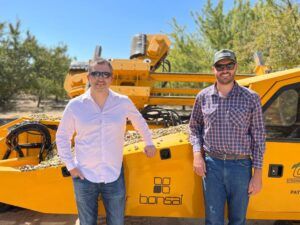As US urban city populations grow, vertical farms are cropping up across the nation.
According to the World Health Organization, city growth is exploding, and putting major food demand on urban areas. By 1990, less than 40 percent of the world’s population lived in a city. Today, more than half of the world’s population lived in the city. By 2050, over 80 percent of the world’s population will be living in urban areas.
The idea of the vertical farm has been lauded for decades by Dickson Despommier, a microbiologist, ecologist and Professor of Public Health in Environmental Health Sciences at Columbia University. This video will give you an idea both of Despommier’s vision, and his enthusiasm:
Though the idea has been in the idea works, urban vertical farming is relatively recent. The first commercial vertical farm opened in November 2012 in Singapore, and has been doing well. “My customers keep on asking us, can you produce more, can you supply more?” said builder Jack Ng to reporter Sam Eaton. Since 2012, Ng has raised over $28 million dollars in both public and private funds, and he hopes to increase his production by at least 4-fold.
Now the US looking up with green glasses, and Chicago is leading the way. Just 15 miles from the city’s downtown is the world’s largest vertical farm. A 90,000 square foot greenhouse, The Plant, provides almost 1 million pounds herbs, arugula, watercress and other greens. (To boot, it was USDA certified organic last September.)
And it’s not ideas or legislation that are holding back vertical farms. Commercial farming became legal within the city limits of Boston in December. On Monday, Leon Neyfakh’s article describing what a greener Boston might look like was published in the Boston Globe. In San Diego, architect and designer Brandon Martella, 24, designed a greenhouse that is ready to be built. He’s just waiting for the builder.
The real hold up is the capital.
“The challenge will be to get investors interested,” said Dr. Ngiam Tong Tau to Karissa Rosenfield reporting for the Arch Daily. Dr. Ngiam Tong Tau is the chairman of Sky Greens, the world’s first low carbon hydraulic water-driven, tropical vegetable urban vertical farm. “This type of farm needs (relatively) higher capital,” he said. “This is a new system, so people need to be trained (and) we need to attract people to come here to work.”
There are of course the skeptics, who worry that the energy requirements of vertical farms outweigh the benefits. One article in blog, A Sustainable City, outlines some of the big downsides: (1) urban land is much costlier than rural farmland, (2) there are larger side costs such as controlling ambient temperatures and powering lights for the skyscraper, and (3) the amount of attention needed for proper arrangement and pollination might prove more difficult. Even Despommier himself points out that urban vertical farms won’t be easy, saying, “You can’t just stack greenhouses on top of each other and get a vertical farm.”
“There’s not a question that lights are part of our big expense,” said Marc Oshima to The Daily Beast’s Miranda Green. Marc Oshima is the chief marketing officer of AeroFarms, a vertical farm technology company based in Ithaca, NY. “But our business model works, and we have very much to look forward to in terms of our philosophy for renewable energy.”
The practicality of urban farming certainly has yet to be proven, at least on a major scale in more than just a few examples. But, they are certainly worth a shot. If investor interest grows as much as the urban population does, then there’s a vertical farm coming to a city near you.
FEATURE PHOTO: Except Integrated Sustainability/Flickr




